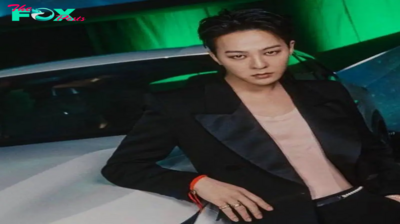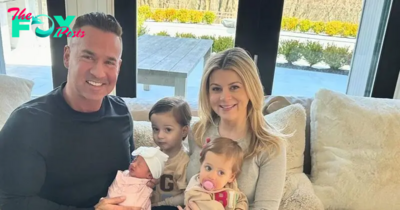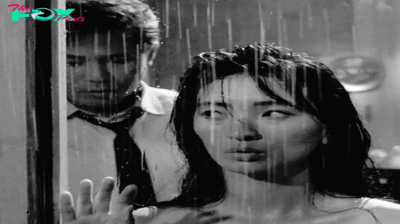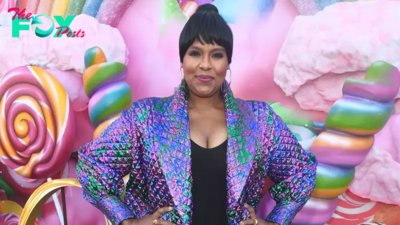Entertainment
What Taylor Swift’s ‘Clara Bow’ Does—And Doesn’t—Have to Do With the 1920s Superstar
When it was announced, in early February, that one of the songs on Taylor Swift’s The Tortured Poets Department would be called “Clara Bow,” Entertainment writers and Swift fans sprang to action with the alacrity of roaring-twenties newshounds leaping to their typewriters. The simplest assumption to make was that Bow, one of the biggest movie stars of the 1920s, had inspired Swift because she too was a radically independent and ambitious woman, as well as a hugely successful star whose private life had received undue scrutiny. It wasn’t unthinkable that “Clara Bow” might be a narrative song about Bow’s life. Swift has written songs about famous people before: “Starlight,” off Red, was inspired by the romance between Ethel and Bobby Kennedy (Swift was dating Conor Kennedy, the couple’s grandson, at the time she wrote it), and “The Last Great American Dynasty,” off Folklore, explores the legend of madcap socialite and patron of the arts Rebekah Harkness, the previous owner of Holiday House, the Rhode Island mansion-by-the-sea Swift bought for herself in 2013.
“Clara Bow,” it turns out, isn’t about Clara Bow the person at all, though it could be said to be about Clara Bow the vibe. Is it possible to be beautiful and charismatic to the point of possessing a kind of cosmic power that draws success to you? And while that’s great, to a point, what happens next? The song opens with the lines “You look like Clara Bow in this light, remarkable/ All your life, did you know you’d be picked like a rose?” Swift sings the words with a kind of tiptoeing confidence, as if she were finding her way to an idea, a possibility—the potential for a grand, amazing life, something deeply yearned for but just out of reach. And she’s looking at someone else—or perhaps she’s outside herself, looking at a self she used to be, or might have been, or has already become, the way little kids (and maybe some adults) imagine God as a guy who sits on a cloud all day observing his creations. Her phrasing is bell-like in its clarity; the melody has a halting naivete, like a nursery rhyme. If Swift doesn’t exactly know where she’s going with her idea, you can be sure she’ll have it figured out by the song's end.
But Clara Bow the woman and star makes her appearance only at the beginning of “Clara Bow.” The two other women referenced in the song are Stevie Nicks and Swift herself, and it becomes clear that the song is partly about self-possession and knowing the worth of your beauty, but perhaps even more about the worth others see in it—and their almost reflexive desire to market it. And that’s where the story of Clara Bow comes in.
Read more: All the References in Taylor Swift's Title Track ‘The Tortured Poets Department’
Bow was born in a Brooklyn tenement in 1905, to parents who simply didn’t want her. Like lots of kids in the early 20th century (and even sometimes today), she sought refuge at the movies. Her desire to escape dismal Brooklyn, and especially her terrifying, mentally ill mother, Sarah, led her to enter a beauty contest that had been announced in her favorite magazine, Motion Picture. The first prize: being cast in an actual movie. She entered with two cheap photographs that didn’t capture her vitality—she’d had to go to her father to get the money for them—yet through a chain of tiny miracles, she won. The name of the comPetition, so nakedly focused on girlish dreams that Taylor Swift really should write a song about it, was the Fame and Fortune Contest.
Clara was on her way—almost. But not long after her win, she awoke one night to find her mother poised over her with a butcher’s knife, intent on killing her, though Sarah fainted before she was able to go through with it. And although the Fame and Fortune Contest wasn’t all it had cracked up to be, it did get Bow to Hollywood—she had one outfit to wear for the whole cross-country train trip, and though it was a rumpled mess by the time she'd reached her dream town, she'd befriended almost everyone on the train.
A Hollywood studio exec named B.P. Schulberg took a chance on her, only to soon realize that both the camera and audiences adored her. Then he exploited her, farming her out to other studios and pocketing gargantuan profits, even as audiences—and not only men—fell deeply in love with her. The “Clara Bow” lines “You’re the new god we’re worshipping, promise to be dazzling/ Beauty is a beast that roars down on all fours, demanding more” sum up her trajectory well.
Read more: On The Tortured Poets Department, Taylor Swift Sends Fans a Message About Their Obsession With Her Relationships
Bow became one of the biggest movie stars of the 1920s, reaching a stratospheric level of stardom that exceeded her dreams without actually fulfilling them. A true Brooklyn girl, she never got “cultured,” and never put on fake airs, like other Hollywood transplants from Brooklyn did. She was never invited to the right dinner parties. She was kind not just to people who could help her, but to crew members and performers who were coming up behind her. She fell in love frequently, and often with several men at once. She was, for a time, engaged to Hollywood director supreme Victor Fleming; then she fell hard for shy, strapping, ethereally handsome Gary Cooper—because, well, who wouldn’t? Her personal life became gossipy sport for the public. There were Scandals—mostly not of her own making, but resulting from the greed of others—that cost her several small fortunes to clean up. She made 46 silent films and 11 talking pictures before essentially leaving the Business, in 1931, after suffering a breakdown. She died in 1965, at age 60.
That may be more than the average Taylor Swift fans want to know about Clara Bow. Or, given the blazing brilliance of Bow’s talents, it may not be nearly enough. For more, check out David Stenn’s superb, deeply sympathetic biography Clara Bow: Runnin’ Wild. And although many of Bow’s films have been lost, you can still watch an assortment of them on YouTube, including the one that gave Bow the “It Girl” nickname, 1927's It, in which she plays a winsome shopgirl who longs to marry her rich boss. Seeing Bow in action, rather than just in pictures culled from the internet, is the only way to understand how captivating she was. She could cry on cue; she would improvise on set, angering directors until they saw how well her spontaneous choices worked. She could be sultry-seductive one minute and girlish as a pink-champagne bubble the next. And she had enormous, fluttery, sparkly eyes, like a cartoon dormouse: there’s something about her you want to protect, even, or maybe especially, today.
Whatever Taylor Swift's relationship may be to Clara Bow’s movies, it does appear that she’s seen lots of the star’s Hollywood portraits. Swift fans, experts at the deep dive, have uncovered portraits of Swift that are styled much like Bow’s; she’s seen perched in similar poses, even, in some cases, wearing similar capes, furry stoles, or camisole-type tops. And the ensemble Swift wore to the Grammys—a white satin strapless sheath festooned with pearls and an Art Deco-stye watch fashioned into a choker—so closely resembles one Bow wore in a publicity photograph that there’s no way it can’t be a direct reference.
But even if Swift doesn’t know every detail about Bow’s sad and blazing life, she surely has some sense of how a person can come from seemingly nowhere and suddenly become everything. The closing line of “Clara Bow” tells us as much: “You look like Taylor Swift in this light, we’re loving it/ You’ve got edge she never did/ The future’s bright, dazzling.” Swift is looking into the crystal ball of fame, using what she knows to write the marketing copy for some future star in advance. But first, she glanced back and saw Clara Bow.
-

 Entertainment4h ago
Entertainment4h agoHighest-Paid Podcasters in the World: Joe Rogan, Bill Simmons and More
-

 Entertainment4h ago
Entertainment4h agoFrom Camila Cabello to Sabrina Carpenter, Look at Shawn Mendes’ Dating History
-

 Entertainment9h ago
Entertainment9h agoWorkshop de Comunicação para a TIVIT
-

 Entertainment9h ago
Entertainment9h agoA Look at the Dating History and Rumoured Relationships of BIGBANG Star G-Dragon
-

 Entertainment14h ago
Entertainment14h agoPalestra WEEM – Mulheres Médicas e o Poder da Comunicação
-

 Entertainment17h ago
Entertainment17h agoMike and Lauren Sorrentino Introduce Baby No. 3 to Kids in ‘Jersey Shore’ Exclusive Clip
-

 Entertainment1d ago
Entertainment1d agoFace Me and Other Korean Medical Crime Shows That are Must Watch
-

 Entertainment1d ago
Entertainment1d agoClassic Korean Movies Like Piagol to Add to Your Watch List

















